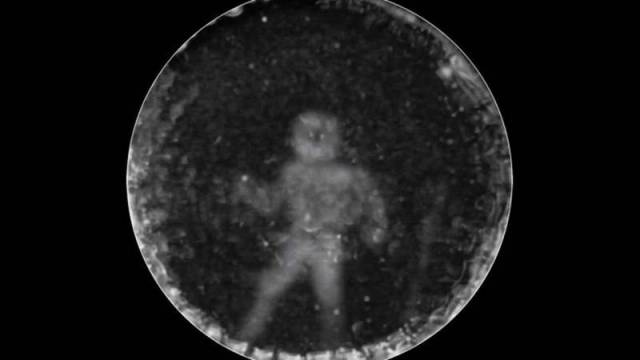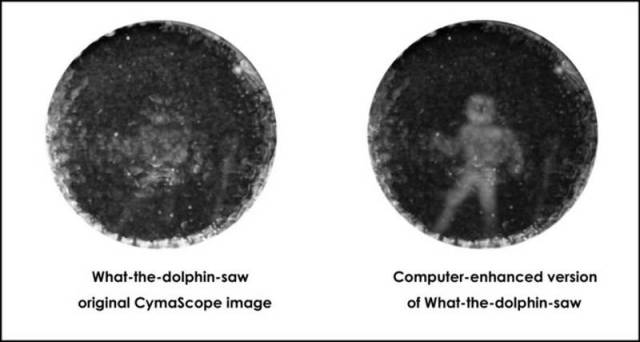Scientists, for the first time in the history of animal communication, use sonar to create first-ever visualization of what a dolphin sees.
Researchers at Speakdolphin.com for the first time have imaged what a dolphin saw when ‘echolocating on a human.’
Images Credit: SpeakDolphin.com/Cymascope Laboratory
They used a system that translates sound into 2D images and then into 3D, resulting a positively identifiable silhouette of a diver.
From the press release:
For the first time in the history of dolphin and animal communication, scientists have imaged what a dolphin saw when echolocating on a human.
Dolphin researchers in Miami and the United Kingdom announced today that they have successfully created the world’s first 3D prints using data extracted from recorded dolphin echolocation. The prints are made with a unique multi-step process that records and isolates dolphin echolocation sounds on specific objects, creates two-dimensional images from those sounds, and uses photo analysis to extract three-dimensional data from the images.
The data is then used to print replicas of the original objects used in the experiment, including the world’s first 3D print of a human being as seen with dolphin echolocation.
“We’ve been working on dolphin communication for more than a decade,” stated Jack Kassewitz, research team leader and founder of SpeakDolphin.com. “When we discovered that dolphins not exposed to the echolocation experiment could identify objects from recorded dolphin sounds with 92% accuracy, we began to look for a way for to see what was in those sounds.” Kassewitz enlisted John Stuart Reid, inventor of the CymaScope, to search for sonic images in the dolphin recordings.
The CymaScope’s patented imaging process imprints sonic vibrations on the surface of ultra pure water. Reid explained, “When a dolphin scans an object with its high frequency sound beam, each short click captures a still image, similar to a camera taking photographs. Each dolphin click is a pulse of pure sound that becomes modulated by the shape of the object.” In this case, Reid used the echolocation recordings to capture clearly identifiable 2D images from the experiment, which included a flowerpot, a cube, a plastic “+” symbol, and a human being.
Kassewitz then turned to 3D Systems, inventors of 3D printing and global leaders in 3D digital design and fabrication, to transform 2D image data into a 3D-printable. vrml file. The files were then brought to life using 3DS’ Projet 660 printer, allowing the objects to be printed rapidly in full color and retaining the initial Cymascope image characteristics.
“We were thrilled by the first successful print of a cube by the brilliant team at 3D Systems,” said Kassewitz.
“But seeing the 3D print of a human being left us all speechless. For the first time ever, we may be holding in our hands a glimpse into what cetaceans see with sound. Nearly every experiment is bringing us more images with more detail.” The team’s next goal is to find out if and how dolphins may be sharing these echolocation images as part of a sono-pictorial language.
via gizmodo
source Speakdolphin.com







Leave A Comment